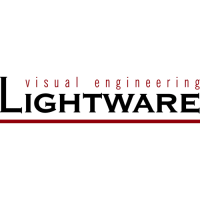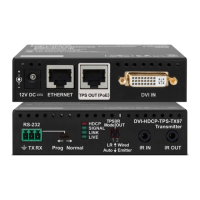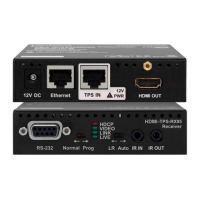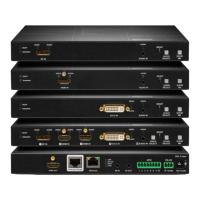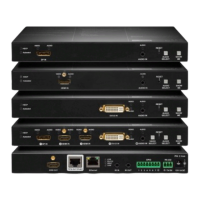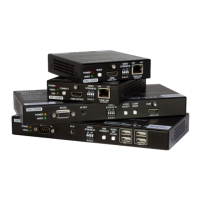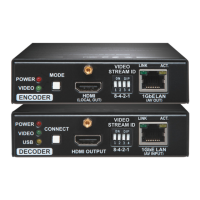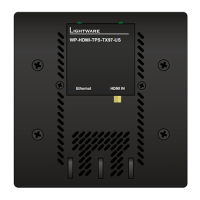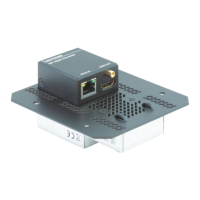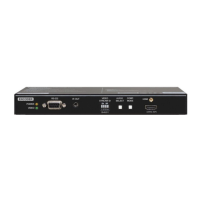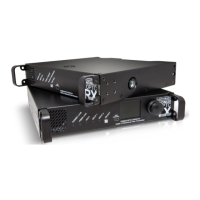<out>: O1 or O2 output port
<in>:
Input port. The port numbering is different in the devices. See the
details in section 11.2 on page 101.
ATTENTION!
The response of this command does not show if the output is muted. To check the mute
status a separate query has to be used like {VC}. See section 7.3.6 on page 53. To
achieve multiple switches executed together, see section 7.3.12 on page 56.
INFO
In this case, the outputs are linked; the change will affect both local and ber optical output
ports.
7.3.2. Mute specied output
Description: Mute output <out>. The output signal is turned off.
Format Example
Command {#<out>●<layer>}
Response (1MT<out²>●<layer>)CrLf
{#01 A}
(1MT01 A)CrLf
Explanation: O1 audio port is muted.
ATTENTION!
Muting does not change the crosspoint’s state but disables the output itself. This way the
last connection can be easily restored with an unmute command. Switching a muted output
does not unmute the output.
7.3.3. Unmute specied output
Description: Unmute output <out>.
Format Example
Command {+<out>●<layer>}
Response (0MT<out²>●<layer>)CrLf
{+01 A}
(0MT01 A)CrLf
Explanation: O1 audio port is unmuted.
INFO
Unmuting an output makes the previous connection active as the crosspoint state has not
been changed by the muting command, only the output was disabled.
7.3.4. Lock the output
Description: Lock an output port. Output’s state cannot be changed until unlocking.
Format Example
Command {#><out>●<layer>}
Response (1LO<out²>●<layer>)CrLf
{#>01 A}
(1LO01 A)CrLf
Explanation: O1 audio output port is locked.
Legend: See section 7.3.1 on page 51.
Page 52 / 106 LW2 programmers' reference
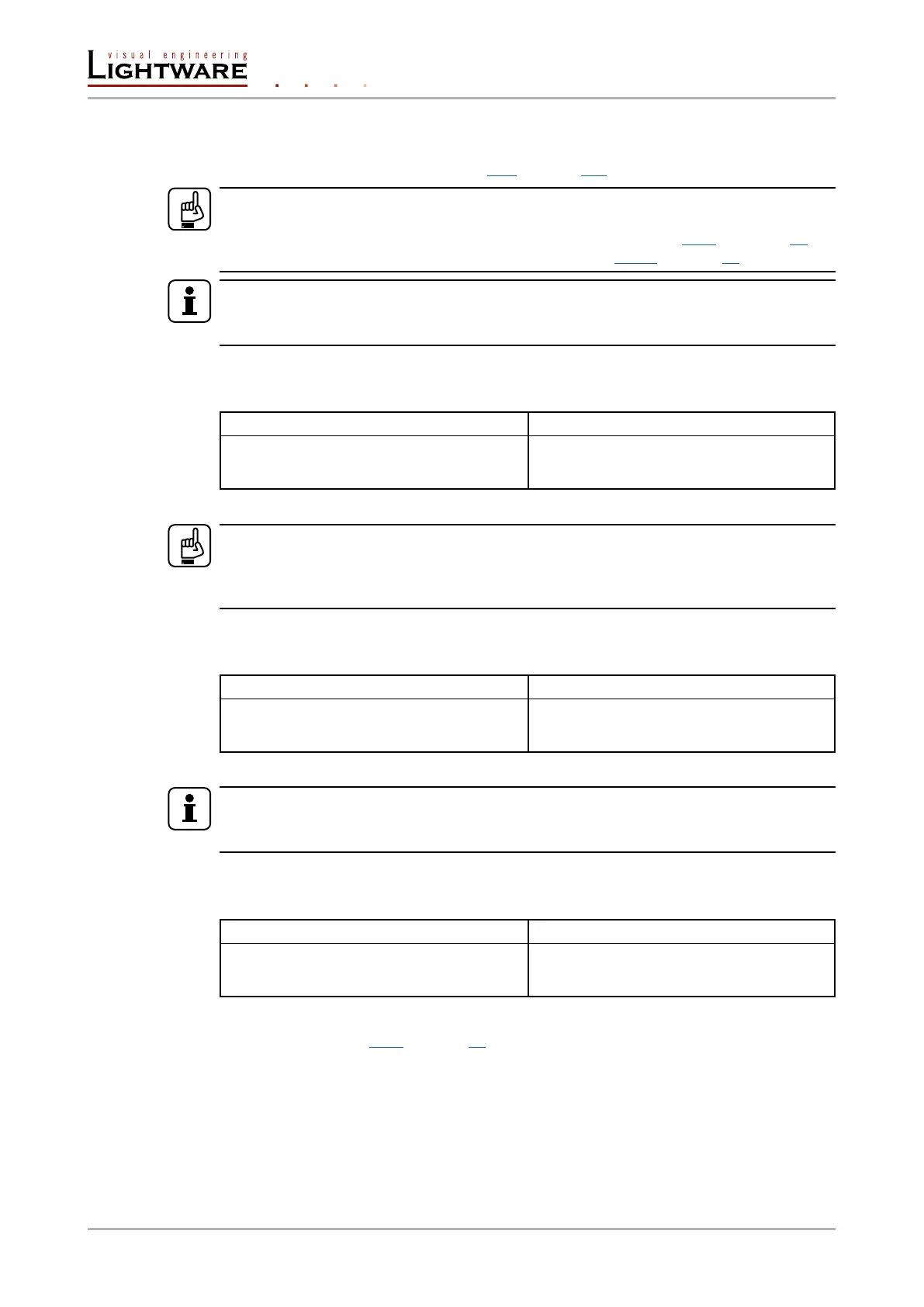